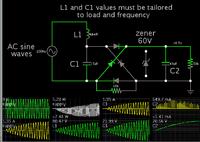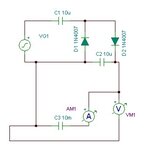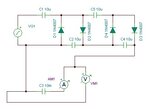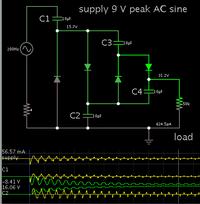hubble86
Junior Member level 2

Hello, I have got a small 4 wire 200 step 2-phase stepper motor which I wish to use a 10mF 63V capacitor. I am getting around 6Vrms (open circuit) at each of the two coils when rotated at around 350 rpm. How do I step up the voltage and charge the capacitor with good efficiency(low power loss as a result of I2R heat, if any)?
Thanks.
Thanks.







